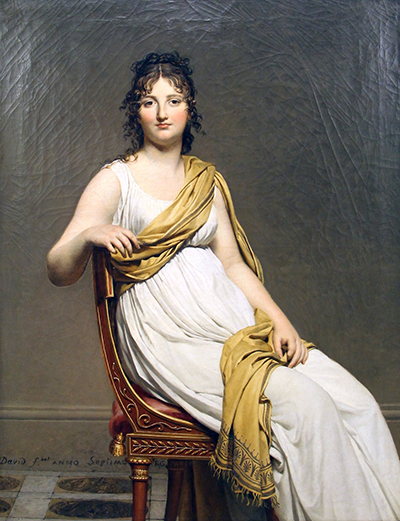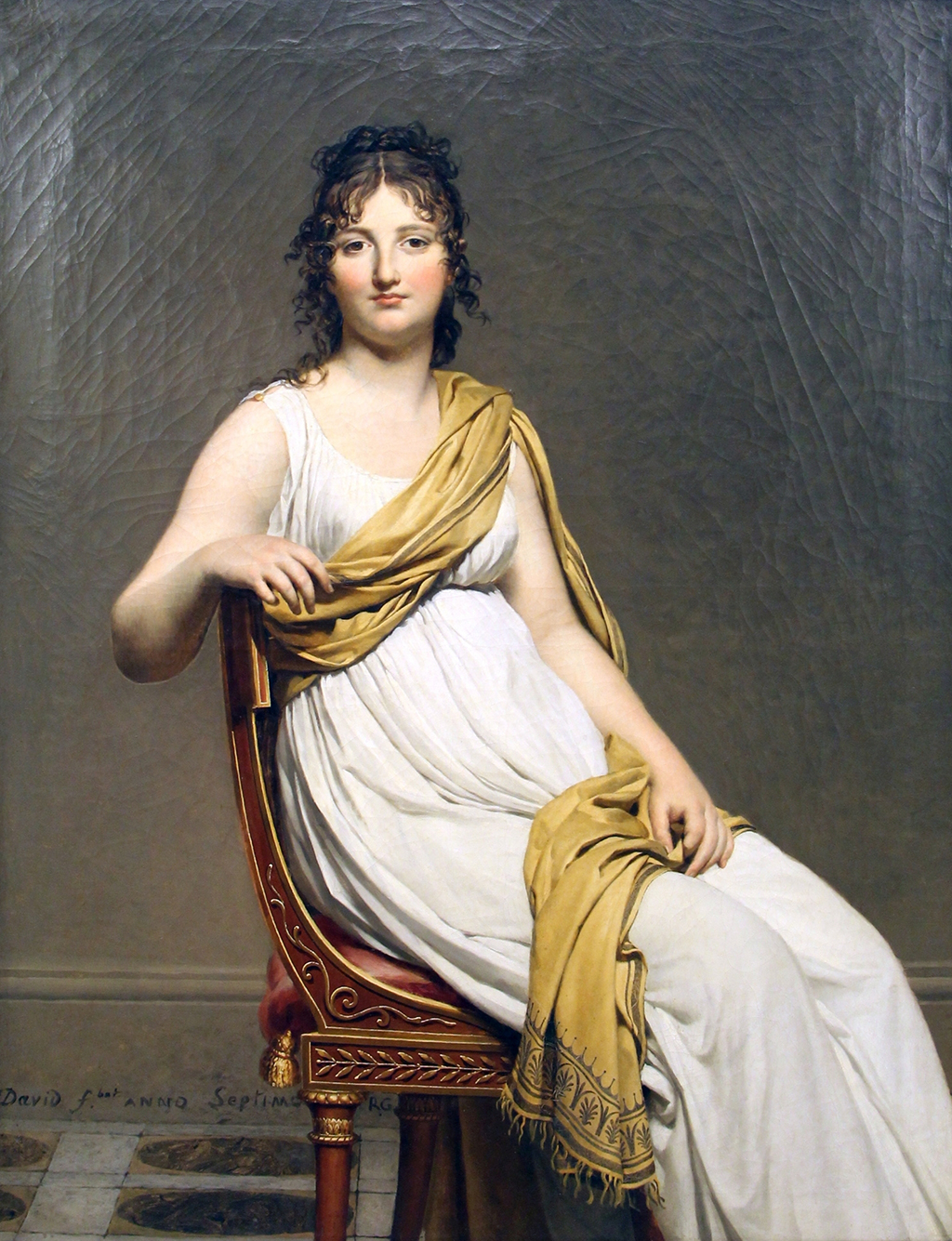Henriette de Verninac came from a privileged background and a family which was heavily involved in the arts. She herself would be the subject of a number of portrait paintings and sculptures during her lifetime.
It was Jacques Louis David's portrait of her from 1799 that is the most memorable interpretation of her image. She looks thoroughly majestic in this painting, sat in a relaxed pose on a beautifully carved chair. The chair itself is placed sideways so that she can lean across the back and face the viewer. She wears a fairly simple but elegant white chemise gown, though with the addition of a mustard coloured cloth or scarf (with classical pattern at it's tip) which may have been selected by the artist to add some extra interest to the scene. The background is simple and plain, just as with most of this artist's portraits, as he did not want to create anything to busy throughout that would lose the main focus. She was born in 1780, as Henriette Delacroix, and so would have been in her late teens at the time of this painting.
Henriette would become Madame de Verninac after marrying Raymond de Verninac-Saint-Maur just a year before this painting was produced. He was tasked with organising the annexation of Avignon in 1791, so was clearly a high ranking individual with influence and wealth. His work would eventually take them both abroad for extended periods. She would later be sculpted as Diana the Huntress, by Joseph Chinard. Her youngest brother was Eugene Delacroix, a world famous Romanticist artist who would go on to produce stunning artworks such as Liberty Leading the People, Death of Sardanapalus and Massacre at Chios. He was actually born in the same year as this painting, and she would care for her younger brother when they lost their mother.
David had an ability to charm us with his female portraits - here the skin is soft and delicate, as if one is there in the room. Her gaze is confident and unrelenting, leaving her image in our minds for years to come. She feels important, even though her dressing is fairly simple and her pose relaxed. Her skin again is delightfully pale, suggesting at that time a high level of virtue and innocence, such was society at that time. It could almost remind some of the great Pre-Raphaelite women who followed in the UK many years later. That was a movement devoted to the female form, where as, of course, David was much more varied in his work and was almost respected for his history paintings such as Napoleon Bonaparte in his Study at the Tuileries and The Oath of Horatii. Many would learn from his career, and in many different ways. This piece also brings a connection to the Delacroix family which adds a further layer of interest.





